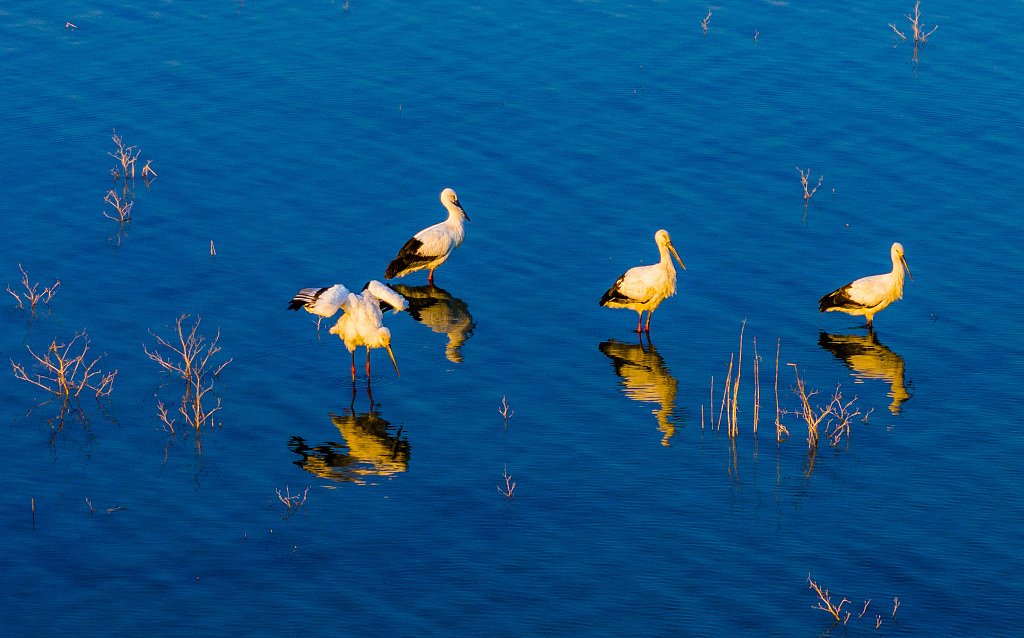In the tranquil waters of Huajiahu Lake, located in the verdant landscapes of Anhui Province, a rare and majestic sight unfolds. Here, the Oriental White Stork, an avian jewel of China, finds a haven, a place to rest and forage amidst the serene beauty of the lake. These birds, with their striking white plumage, elegant stature, and serene demeanor, are not just beautiful creatures; they are symbols of nature’s fragile balance, a reminder of the delicate interplay between humans and the natural world.
The Oriental White Stork is an endangered species, revered as a national treasure in China. Its status on the International Union for Conservation of Nature’s (IUCN) Red List of Threatened Species as an endangered species paints a somber picture of its plight. With less than 10,000 individuals left worldwide, each sighting of these magnificent birds is a rare and precious occurrence.
Huajiahu Lake has become a sanctuary for these storks, offering them a safe haven to rest, forage, and thrive. The lake’s ecosystem provides an ideal habitat for these birds, with abundant food sources and a tranquil environment away from human disturbances. The storks, with their long legs wading through the shallow waters, and their sharp beaks skillfully catching fish, are a testament to the rich biodiversity of the lake.
The presence of these storks at Huajiahu Lake is significant for several reasons. First, it highlights the importance of preserving natural habitats that are crucial for the survival of endangered species. The lake serves as a critical stopover for the storks during their migratory journeys, offering them a respite and a replenishing ground. The health and sustainability of such habitats are vital for the survival of species like the Oriental White Stork.
Secondly, the storks are an indicator of the broader environmental health of the region. As top predators in their ecosystem, their well-being reflects the overall ecological balance. Their presence at Huajiahu Lake is a positive sign, suggesting that the lake’s environment is relatively pristine and capable of supporting diverse wildlife.
Efforts to protect and conserve the Oriental White Stork are ongoing. Conservationists and researchers are actively engaged in monitoring the stork population, studying their behavior and migration patterns, and implementing measures to protect their habitats. This involves not just preserving the natural environments but also raising public awareness about the importance of these species and the need for conservation.
The Oriental White Stork also holds cultural significance in China, often associated with good luck and longevity. Their revered status in Chinese culture adds to the urgency and importance of their conservation. Protecting these birds is not just an ecological imperative but also a way to preserve a part of China’s rich cultural heritage.
Moreover, the presence of these storks attracts nature enthusiasts, bird watchers, and photographers, making Huajiahu Lake a destination for eco-tourism. This, in turn, helps to foster a greater appreciation for wildlife and the importance of conservation efforts among the general public.
In summary, the Oriental White Storks of Huajiahu Lake are not just a magnificent sight to behold; they are symbols of nature’s vulnerability and resilience. Their survival and prosperity depend on the concerted efforts of conservationists, government policies, and public awareness. As we marvel at the elegance of these storks, we are reminded of our responsibility to protect and preserve the natural world for future generations, ensuring that these majestic birds continue to grace the skies and waters of our planet.
READ MORE:
